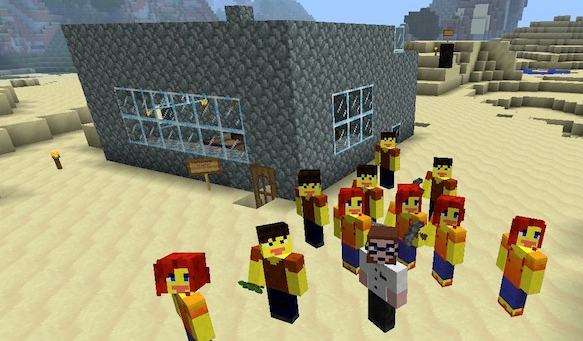In apps and software, this is commonly interpreted as adding point systems (sometimes with competitive student leaderboards), badges for accomplishments and levels of progression. One of the highest profile examples of this approach is the Khan Academy, which layers avatars, energy points and badges on top of completing traditional math activities.
But gamification can be done well or poorly.
“The first place people go with gamification is ‘rewards.’ There can be dragons," says Scott Dodson, a gamification expert and executive with Bobber Interactive. "Rewards done wrong essentially train the user that the activity is devoid of intrinsic value which leads to amotivation, short-term engagement at best.”
Dodson adds that rewards can work, but the way the user experience is framed – providing feelings of competence, of being in control and that the outcome matters – is critical, “and marketers (and frankly most people) don’t really have a clue.”
Chisholm expresses similar skepticism when it comes to education. “We’re reserved, if not dubious, about how gamification is employed,” he says, adding it takes a good designer and serious thought about what is actually being gamified.
SIMULATION
Mention the original 1989 SimCity as an example and pretty much everyone understands what you mean by a digital simulation that can be used in education. But a good simulation doesn’t have to be game-like. It just has to have both an internally consistent setting with rules and attempt to recreate a real-world scenario or situation.
One example: Platform Wars, a management simulator used by the MIT Sloan School of Management for its courses and released for public use in February. In it, the student heads up a video game company and has to make strategic decisions over a decade in simulated time to edge out a competitor’s platform and maximize profits. It’s definitely not flashy, resembling Excel more than Electronic Arts.
But that doesn’t mean a simulation can’t be pretty. MediaSpark, which has created business education software for high schools for a number of years, is preparing for the alpha release of GoVenture World, a web-based, massively multiplayer online role-playing business simulation. In it, players (teenagers and older) can choose a role in manufacturing, law, advertising, retail or investment, deal with each other and sell to simulated consumers. One month in play equals a year in time.
Defined another way, “Simulations are re-creations of systems,” says Scott Traylor, who frequently speaks and writes about learning games and is the CEO of digital kids’ content and tech developer 360KID. That simulation can be of a chemistry lab, gravity or even disaster response. “You are dropped into a situation and the only way you succeed is through trial and error, learning the correct ways of thinking to succeed in a particular role. Does learning occur in a well-designed simulation? You bet. Is this a game? You tell me.”
(SIMPLY) GAMES
Successful games in education have a long history, dating back to at least 1985, Where in the World is Carmen Sandiego (the first learning product to receive the software industry’s CODiE award) and that decade’s Reader Rabbit and Math Blaster, to massively multiplayer, web- and mobile-based learning games of today, like World of Warcraft.
Games, like simulations, are rule-based. But more so than gamified activities and simulations, there’s usually a strong emphasis on beating the game: that is, playing and winning.
“You, as the user, are intrinsically interested in the play experience. If you are engaged at that level, all games have the potential to teach,” notes 360KID’s Traylor. “Good play equals good learning. One example of where learning games tend to go wrong is when game developers apply an A-B-A-B approach to gaming. First you start off by offering some engaging gaming content (A), then you switch to some educational content you must get through in order to return to the game (B).
“That’s the chocolate-and-broccoli approach to gaming. Successful learning games seamlessly integrate learning content into the gaming experience,” he says.
Chisholm is equally direct, saying the field of game-based educational research has really exploded in the past dozen years. “We don’t want to mimic some of the interesting failures of the multimedia market of the 1990s,” he adds.
Traylor echoes the concern. “As people race to develop learning games, only thoughtful and solid collaboration (between gamers and teachers) guided by good research, game development expertise and content expertise will succeed. Learning games could become the latest fad if the market becomes flooded with really bad learning games. That is something I worry about.”
Then add in the reality that the lines between gamification, simulation and game aren’t clean: a fuzzy continuum, an overlapping series of circles or, as Bobber’s Dodson suggests, “a triangle, visually” with gamification off the axis and between the others.
Take Minecraft. Is it a massively multiplayer digital simulation of building with LEGO-like blocks? Or is it a learning game once teachers create projects for student collaboration using logic gates and objectives?
It could be the best response an educator or parent can have, when faced with a digital enthusiast who wants to use games in education, is to first simply ask, “What kind?” And then play on.


